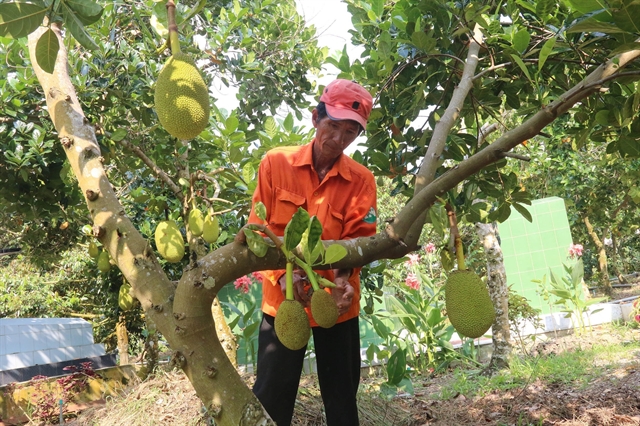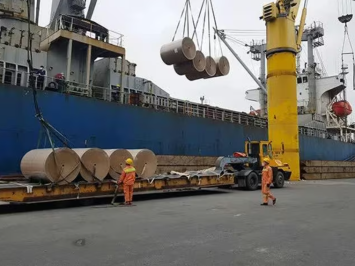Tiền Giang Province is implementing various measures to enhance the quality of Thai jackfruit and increase its official exports.

A Thai jackfruit orchard in Tiền Giang Province’s Cai Lậy District. – VNA/VNS Photo Minh Trí
TIỀN GIANG – Tiền Giang Province is implementing various measures to enhance the quality of Thai jackfruit and boost its official exports.
The Cửu Long (Mekong) Delta province is applying advanced farming techniques to cultivate Thai jackfruit, encouraging farmers to adhere to food safety and environmental protection standards, while also developing production codes for designated growing areas. It has also urged packaging establishments to obtain packing codes to facilitate exports.
As the country’s largest fruit-producing province, Tiền Giang has nearly 16,000 hectares under Thai jackfruit, producing 300,000 tonnes annually. The primary growing areas include Cái Bè, Cai Lậy, Châu Thành, and Tân Phước districts and Cai Lậy Town.
With favourable soil and climate conditions, the province achieves high yields of around 20 tonnes per hectare annually.
According to its Department of Agriculture and Environment, there are 72 officially recognised Thai jackfruit growing areas covering a total of 8,600 ha, which have all been granted production codes for export.
In addition, 300 packaging codes have been issued to facilities exporting jackfruit, durian, dragon fruit, mango, and other fruits to China. The province is implementing a project to restructure crop and livestock farming in the upstream areas of the Tiền River, a tributary of the Mekong River, north of National Highway No. 1.
This initiative encourages farmers to convert unproductive farmland into specialised fruit-growing areas for Thai jackfruit and durian or vegetable cultivation, improving productivity and profits. As part of the project, research is being conducted to prevent diseases, enhance jackfruit quality and utilise by-products for value-added products.
Nguyễn Văn Nhã, who converted his 2.2-hectare rice field into a Thai jackfruit plantation in Mỹ Thành Nam Commune, Cai Lậy District, said the fruits began to grow after three years and nearly year-round, and the yields are 25-30 tonnes annually. He earns nearly VNĐ1 billion (US$39,000) a year. Nguyễn Văn Hát, chairman of the Mỹ Thành Nam Commune Farmers Association, described Thai jackfruit as a “poverty reduction” crop due to its high yields, strong export potential and economic value.
Farmers in the commune have converted hundreds of hectares of unproductive rice fields into Thai jackfruit plantations, using both monoculture and intercropping methods. Authorities in key growing areas such as Cai Lậy and Cái Bè districts have provided farmers with technical training in intensive farming methods and good agricultural practices. They are also encouraging farmers and businesses to establish specialised growing zones and acquire production codes to meet export standards. The price of Thai jackfruit has risen significantly since Tết (Lunar New Year), which started on 29 January.
In early February prices in Cai Lậy Town were at VNĐ15,000-27,000 per kilogramme depending on quality, VNĐ3,000-5,000 higher than a month earlier. Nguyễn Thị Ngọc, a trader in the town, said prices have surged due to a limited supply and strong demand.









![Detailed Guide to Chemical Import Procedures [Updated 2025]](https://songwinlog.net/thumbs/355x266x1/upload/news/ve-tay-hinh-tron-logo-2-3776.png)











